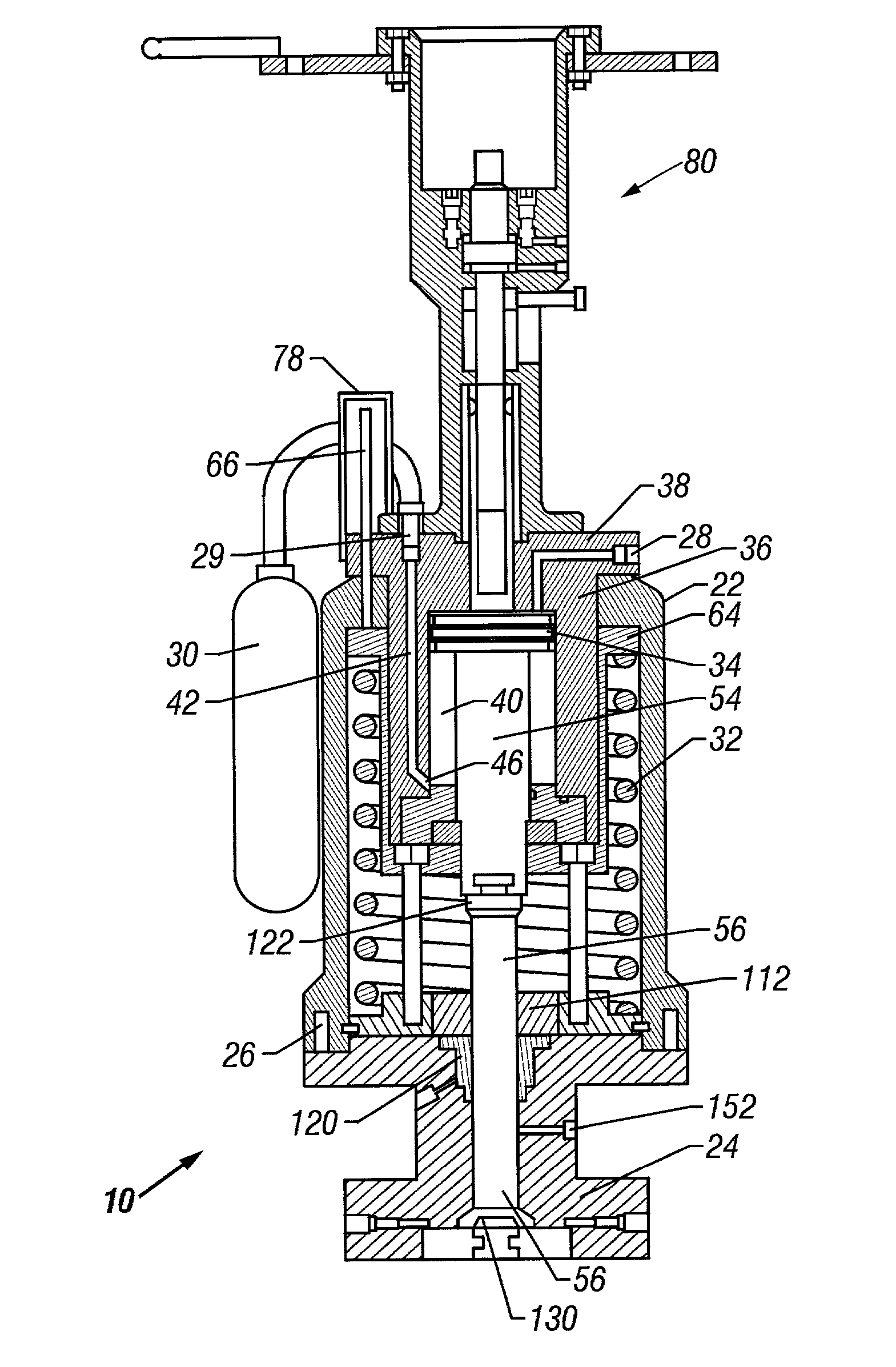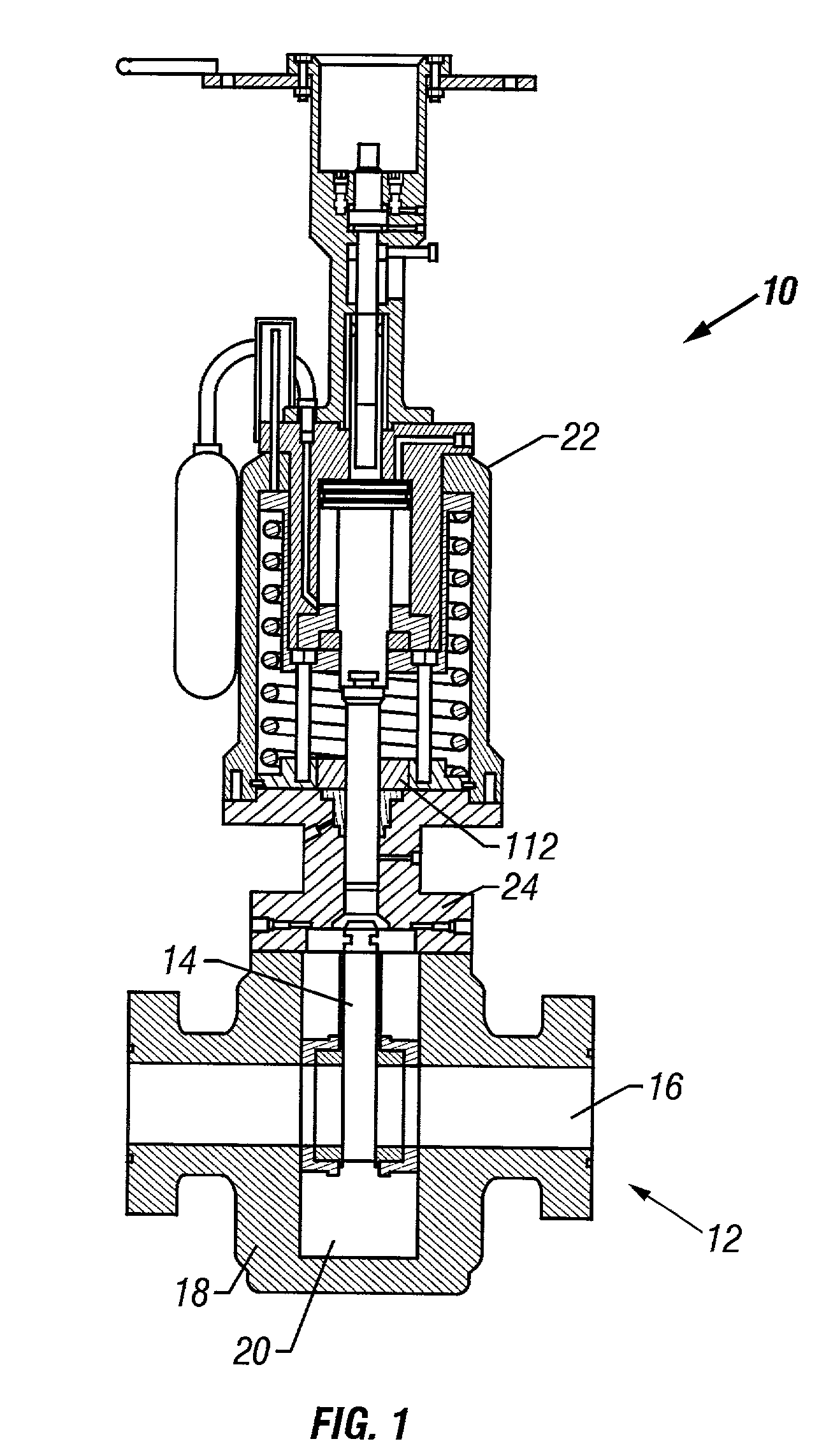Valve actuator and method
a valve actuator and valve body technology, applied in the direction of valve operating means/releasing devices, service pipe systems, transportation and packaging, etc., can solve the problems of additional problems, unreasonably delay or preclude fail-safe operation, and limited hydraulic fluid volume and pressur
- Summary
- Abstract
- Description
- Claims
- Application Information
AI Technical Summary
Benefits of technology
Problems solved by technology
Method used
Image
Examples
Embodiment Construction
[0041] Referring now to the drawings, and more particularly to FIG. 1, the generally preferred configuration of subsea actuator 10, in accord with the present invention, is illustrated connected to gate valve 12. Various types of gate valves, such as gate valve 12 may be controlled using the actuator of the present invention. Gate valve 12 includes a gate 14 that may be moved between an open position and a closed position as is well known to control fluid flow through passageway or line 16. Gate valve 12 includes gate valve housing 18. Gate valve chamber 20 may be at line pressure sometimes during operation and one object of the present invention is to provide means for preventing leakage between gate valve chamber 20 and actuator housing 22 as is discussed hereinbelow in detail.
[0042] FIG. 2 shows actuator 10 in a somewhat enlarged view. Actuator housing 22 is removably connected to bonnet 24 preferably be means of bolts 26 although other removable fasteners, such as various types ...
PUM
 Login to View More
Login to View More Abstract
Description
Claims
Application Information
 Login to View More
Login to View More - R&D
- Intellectual Property
- Life Sciences
- Materials
- Tech Scout
- Unparalleled Data Quality
- Higher Quality Content
- 60% Fewer Hallucinations
Browse by: Latest US Patents, China's latest patents, Technical Efficacy Thesaurus, Application Domain, Technology Topic, Popular Technical Reports.
© 2025 PatSnap. All rights reserved.Legal|Privacy policy|Modern Slavery Act Transparency Statement|Sitemap|About US| Contact US: help@patsnap.com



